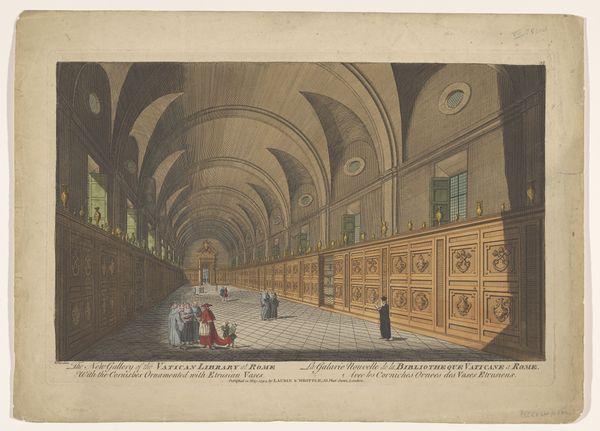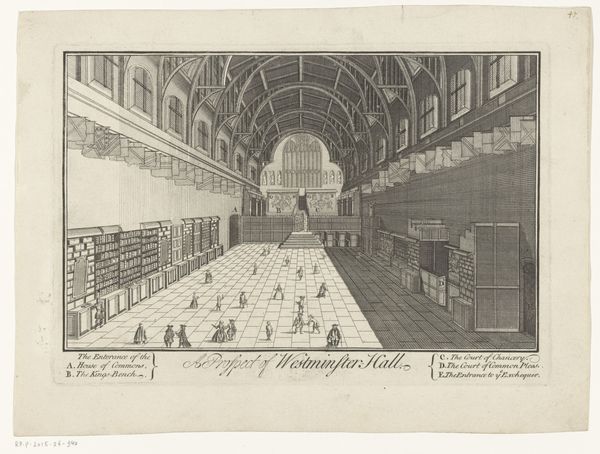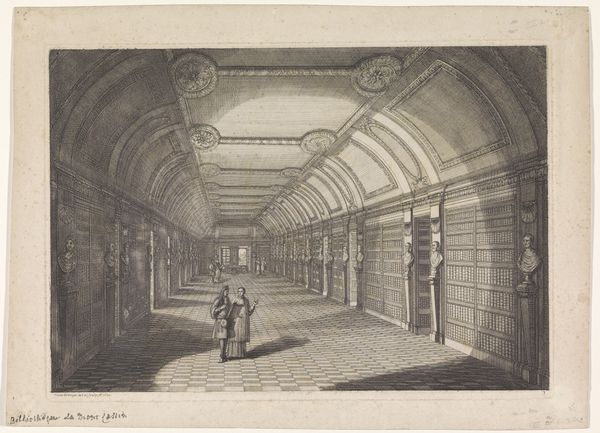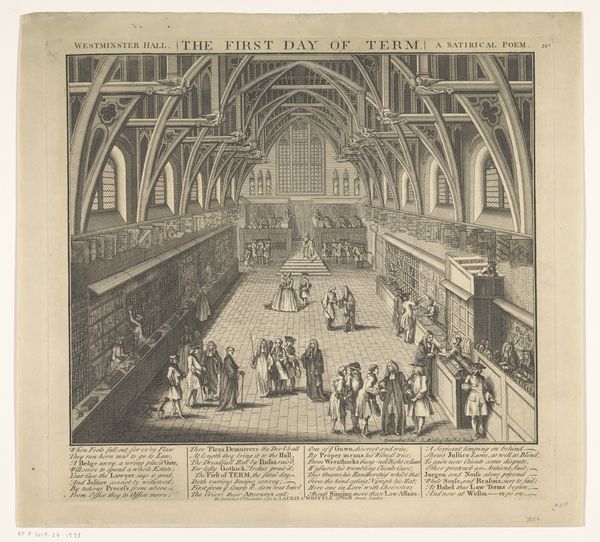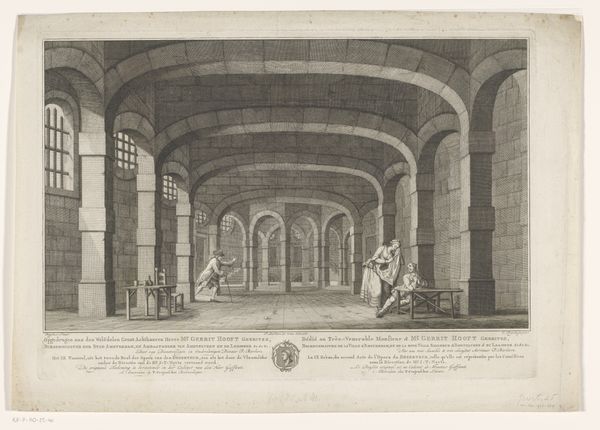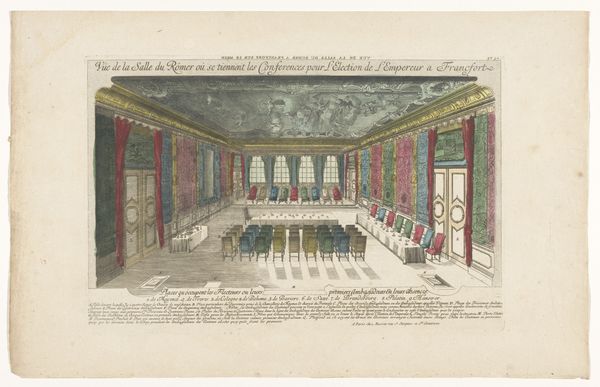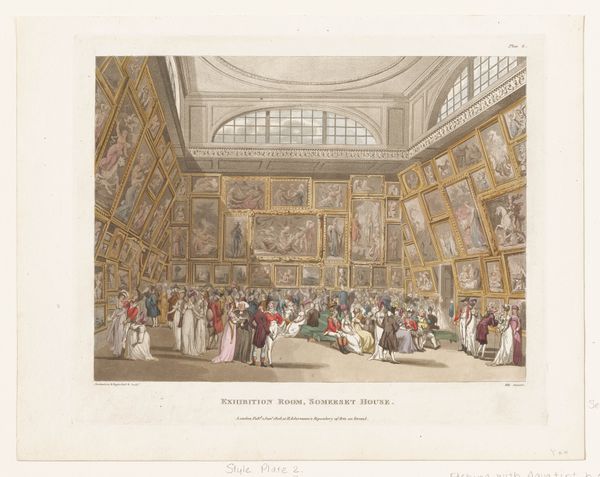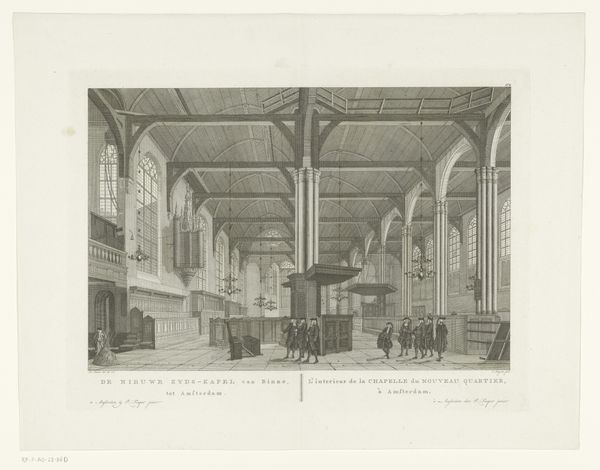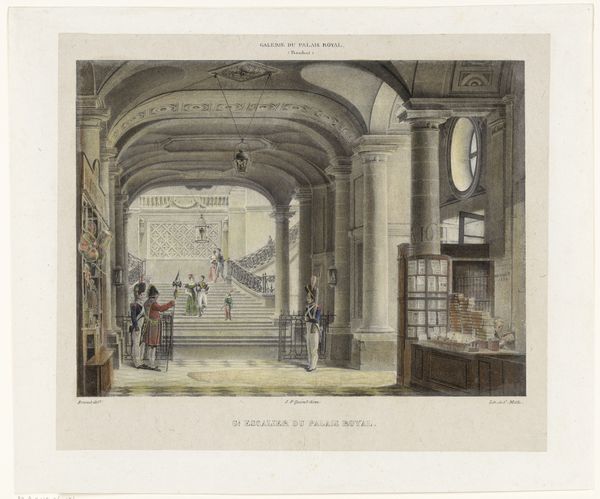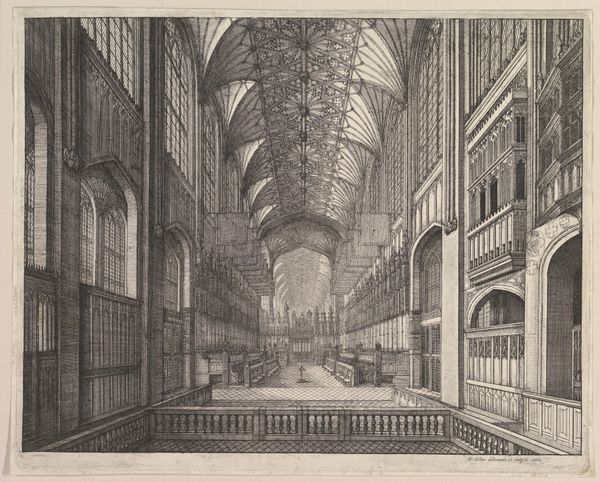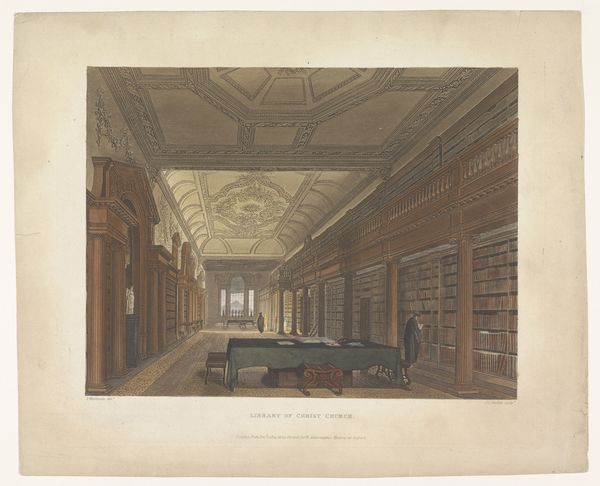
print, etching, engraving
#
baroque
# print
#
etching
#
perspective
#
cityscape
#
history-painting
#
engraving
Dimensions: height 318 mm, width 482 mm
Copyright: Rijks Museum: Open Domain
Editor: This print, "Galerij in de Vaticaanse Bibliotheek," made sometime between 1722 and 1758 by Nicolas Jean Baptiste Poilly, shows a stunning view inside the Vatican Library. It really emphasizes the building's grandeur and scale. How would you approach analyzing something like this? Curator: As a materialist, I see more than just grandeur. I see the process behind its creation, the physical labor embedded within. Consider the engraver's tools, the quality of the paper, the economic systems that allowed Poilly access to these materials and the skills needed to create this. Who was consuming these images and why? Editor: That's interesting. I was focused on the aesthetic, but you're highlighting the social and economic context of its production. So, you’re less interested in the beautiful perspective and more in who was buying and distributing it? Curator: Precisely. The "beautiful perspective" is itself a product of a specific historical moment, a particular way of seeing fostered by certain technologies and power structures. Think about the accessibility of such an image. Was this print meant to inspire awe in potential patrons, showcasing the wealth and influence of the Vatican through reproducible media? How does that impact our reading of it? Editor: I never thought about prints in terms of consumption, but it makes perfect sense. It allowed wider access to these spaces through visual reproductions. How does the Baroque style play into your materialist approach? Curator: The Baroque’s elaborate ornamentation points to available resources and a culture of conspicuous consumption. Each etched line represents skilled labor and time. Consider the detailed cornices mentioned in the title. They're not just decorative; they represent value, control over resources, and the power dynamics inherent in their creation and display. How does that perspective shift your interpretation? Editor: It definitely moves beyond just admiring the aesthetics to understanding the systems that supported its making and the intended audience. I'll never look at a print the same way again. Curator: And that, perhaps, is the first step towards understanding the complex relationship between art, labor, and society.
Comments
No comments
Be the first to comment and join the conversation on the ultimate creative platform.
